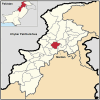Evaluating prevalence, risk factors, and diagnostic techniques for Cryptosporidium infection in goats and surrounding water sources
- PMID: 39748871
- PMCID: PMC11693644
- DOI: 10.3389/fvets.2024.1498682
Evaluating prevalence, risk factors, and diagnostic techniques for Cryptosporidium infection in goats and surrounding water sources
Abstract
Background: Cryptosporidium spp. are protozoan parasites that infect the gastrointestinal tract of various animals, including goats, and can also contaminate water sources, posing a significant public health risk. Detecting Cryptosporidium oocysts in fecal and water samples is critical for understanding the epidemiology of cryptosporidiosis and implementing appropriate control measures. Various staining methods, such as the Modified Ziehl-Neelsen (ZN) and Kenyon's Acid-Fast (KAF) staining techniques, are employed to identify these oocysts. This study compared the effectiveness of these two staining methods in detecting Cryptosporidium oocysts in goat feces and water samples across different geographic regions in district of Mardan, Khyber Pakhtunkhwa, Pakistan, and other factors such as genders, age groups, diarrheal statuses, and feeding regimes.
Methods: A total of 300 fecal and 300 water samples were collected from goats and water sources in four geographic regions: Tehsil Katlang, Tehsil Takhtbhai, Tehsil Mardan, and Tehsil Lundkhwarh. Samples were categorized based on gender, age group (<1 year, 1-2 years, and >2 years), diarrheal status, and feeding regime (stall feeding, grazing). The two staining methods, ZN and KAF staining, were employed to detect Cryptosporidium oocysts. The detection rates were calculated, and statistical analyses were performed to compare the effectiveness of the two methods across different categories.
Results: The overall detection rates of Cryptosporidium oocysts for fecal samples were 61.00% (95% CI: 55.22-66.55%) using the ZN method and 63.33% (95% CI: 57.60-68.79%) using KAF method, with no significant difference (p > 0.05). The highest detection rate was observed in Tehsil Katlang (70.66%) with the ZN method and in both Tehsil Katlang and Takhtbhai (66.66%) with the KAF staining method, having no significant difference (p > 0.05). Gender-wise analysis in fecal samples showed similar detection rates for males and females, with no significant differences. Age-wise, the highest detection rates were found in the youngest age group (<1 year) using the ZN method, and in the oldest age group (>2 years) using KAF staining, with no significant differences between age groups. Diarrheal status analysis indicated higher detection rates in diarrheic goats for both methods, with the highest detection rate in the diarrheic group of Tehsil Katlang (84.61%) using the ZN method. Feeding regime analysis showed no significant differences between stall-fed and grazing goats. For water samples, the detection rates of Cryptosporidium oocysts were significantly different between the two methods. The ZN technique had a significantly higher overall detection rate of 16.00% (95% CI: 12.03-20.64%) compared to 1.00% (95% CI: 0.20-2.89%) for KAF staining (p < 0.001). The performance of the two staining methods for the detection of Cryptosporidium oocysts in contaminated water samples from different geographic regions was also presented.
Conclusion: Both ZN and KAF staining methods are effective for detecting Cryptosporidium oocysts in goat feces. However, in water samples, the ZN method showed a significantly higher detection rate compared to KAF staining method, suggesting its suitability for environmental surveillance. These findings highlight the importance of integrating reliable diagnostic techniques with public health interventions to mitigate the zoonotic risks of cryptosporidiosis.
Keywords: Cryptosporidium oocysts; Pakistan; cryptosporidiosis; goats; risk factors; water sources.
Copyright © 2024 Rafiq, Khan, Khan, Ahmad, Bibi, Ben Said, Belkahia, Tariq, Saeed, Abdel-Maksoud, El-Tayeb, Fatima, Kiani, Alfuraydi and Badshah.
Conflict of interest statement
The authors declare that the research was conducted in the absence of any commercial or financial relationships that could be construed as a potential conflict of interest.
Figures
Similar articles
-
Comparison of different diagnostic techniques for the detection of cryptosporidiosis in bovines.Vet World. 2016 Feb;9(2):211-5. doi: 10.14202/vetworld.2016.211-215. Epub 2016 Feb 27. Vet World. 2016. PMID: 27051211 Free PMC article.
-
Epidemiological observations on cryptosporidiosis and molecular characterization of Cryptosporidium spp. in sheep and goats in Kuwait.Parasitol Res. 2018 May;117(5):1631-1636. doi: 10.1007/s00436-018-5847-1. Epub 2018 Mar 29. Parasitol Res. 2018. PMID: 29594423
-
Prevalence of Cryptosporidium infection in goats in selected locations in three agroclimatic zones of Sri Lanka.Vet Parasitol. 2000 Nov 10;93(2):95-101. doi: 10.1016/s0304-4017(00)00361-7. Vet Parasitol. 2000. PMID: 11035227
-
Prevalence of Cryptosporidium Infection in Sheep and Goat Flocks in China During 2010-2019: A Systematic Review and Meta-Analysis.Vector Borne Zoonotic Dis. 2021 Sep;21(9):692-706. doi: 10.1089/vbz.2020.2713. Epub 2021 Sep 1. Vector Borne Zoonotic Dis. 2021. PMID: 34491122
-
Epidemiology of Cryptosporidium infection in different hosts in Nigeria: A meta-analysis.Parasitol Int. 2019 Aug;71:194-206. doi: 10.1016/j.parint.2019.04.007. Epub 2019 Apr 8. Parasitol Int. 2019. PMID: 30974207
Cited by
-
Occurrence of Endoparasites in Creole Goats Under an Extensive Production System on the Southern Coast of Peru.Pathogens. 2025 Apr 30;14(5):437. doi: 10.3390/pathogens14050437. Pathogens. 2025. PMID: 40430755 Free PMC article.
-
Coprological and molecular prevalence of Cryptosporidium and Giardia in cattle and irrigation water from Beni-Suef Governorate, Egypt.Sci Rep. 2025 Jul 24;15(1):26983. doi: 10.1038/s41598-025-10552-7. Sci Rep. 2025. PMID: 40707581 Free PMC article.
References
-
- Hao Y, Liu A, Li H, Zhao Y, Yao L, Yang B, et al. . Molecular characterization and zoonotic potential of Cryptosporidium spp. and Giardia duodenalis in humans and domestic animals in Heilongjiang Province, China. Parasit Vectors. (2024) 17:155. doi: 10.1186/s13071-024-06219-3, PMID: - DOI - PMC - PubMed
LinkOut - more resources
Full Text Sources
Miscellaneous


